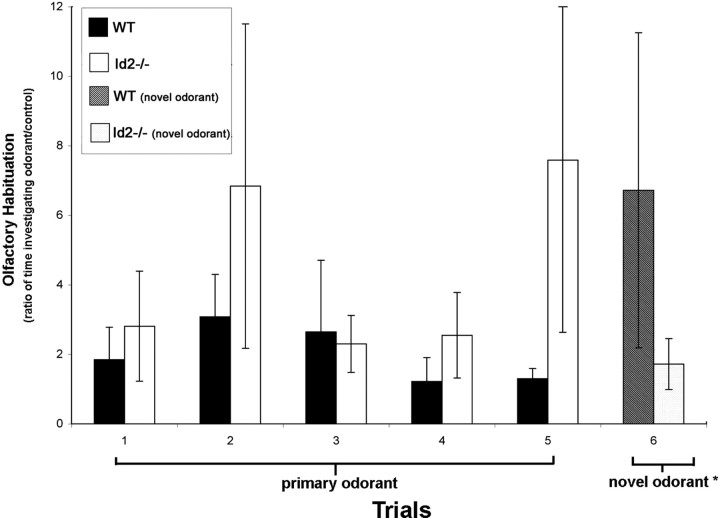Figure 3.
Altered olfaction in Id2−/− mice. Olfactory discrimination was analyzed using a habituation-dishabituation paradigm (Gheusi et al., 2000). To evaluate habituation, mice (n = 5 per genotype) were presented with a primary odorant on five consecutive trials at 30 min intervals, and the time spent investigating the location of an odorant was designated as a ratio of this duration compared with the time spent investigating a control of unscented water. For the sixth trial, a novel odorant was substituted for the primary odorant. The ratios reported represent the average of two independent experiments performed in triplicate. Error bars represent SEM. Mann–Whitney–Wilcoxon rank-sum test was performed on the differences between the responses of WT and Id2−/− mice to the presentation of the novel odorant. W = 52 (p < 0.04).

